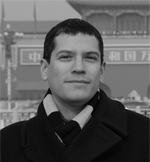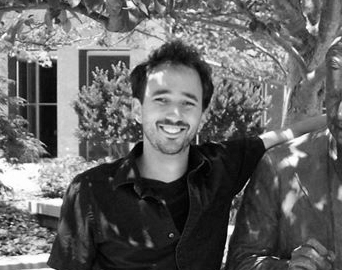
As protests broke out on the streets of Hong Kong in late September 2014, one of the first actions the Chinese government took was to block Instagram on the mainland. Days later, security analysts warned of a new, sophisticated virus targeting iOS devices appearing in Hong Kong that appeared to be of Chinese origin. In response, some protesters turned to Firechat, a short range messaging service that does not require internet access. The aggressive targeting of social media is no surprise. Social media has become a powerful force for change, and the Hong Kong protests are a moment when two opposing perspectives on the use of social media have openly and publicly clashed. Hong Kong maintains a system where social media use is not much different than in the United States. In China social media is carefully monitored and controlled, yet it stands as one of the few outlets where an uncensored story, image, or a cause can reach millions and travel beyond borders. The digital lesson of the Hong Kong protests may be less about the role of social media in organizing protests and more about the evolving efficiency of efforts to control and blunt their impact.
From 1842 to 1997 Hong Kong was under the control of Great Britain, a legacy of a complicated imperialist past. During that time, the territory enjoyed the same rights as British citizens, including a free press, an open internet, and general elections. In 1997 the the former Crown Colony of Hong Kong was returned to Chinese control. As part of the handover, certain rights were to be retained and a degree of autonomy was guaranteed for a period of fifty years. Hong Kong now coexists with its mainland parent to the north under a policy of two systems, one country. One of the most stark examples of the differences between two systems are in their attitudes towards social media. As Hong Kong protesters attempt to ensure a more democratic future, the attack on social media represents an authoritarian path that may await the seven million people of the region. Yet even within China, social media has proven to be resilient and an agent of social change.
There are a variety of factors that make social media a force in China. Chinese mobile phone companies do not operate on contracts and work on a pay as you go model. A 100 yuan card ($15 US dollars) is more than enough for a month or more of regular calls. Data plans are also inexpensive, which allows a large number of Chinese citizens easy access to the internet, and to social media services. Government ownership of mobile companies coupled with China’s bid to modernize has resulted in stellar cell phone coverage all over the country. For Chinese citizens, many of whom live far from their home towns, the cell network ensures an easy means of communication with friends and family.
A second, perhaps more salient element to the popularity of social media has to do with the nature of written Mandarin and the particulars of internet usage in China. A character in Mandarin represents an entire word or syllable, so it is a far more compact language than English. As an example, take the phrase, “meeting tonight at People’s Square.” In English the phrase clocks in at a weighty 35 characters—that’s 25% of the Twitter limit. In Chinese the same phrase is only 10 characters, as in, “今晚在人民广场开会.” This isn’t even taking into account that Chinese does not use spaces between characters or the propensity for the use of numbers as shorthand. Tiananmen Square has come to be known as “64” for the date it occurred and Hong Kong Chief Executive CY Leung has the online nickname “689,“ a reference to his margin of victory in the 2012 election. The numerical shorthand also dodges internet censors, as Beijing often blocks certain words from search engines or from being posted. Another notable element of the Chinese language again comes into play online. Many Chinese characters have similar pronunciations, but have different meanings. By substituting characters with similar pronunciation users are able to get around censors, akin to saying “duck” instead of a common English profanity. This has led to the rise of microblogging as a means to communicate far more than just a status, short statement, or photo of a pumpkin spice latte. Social media is a viable platform for lengthy discussion, criticism of the government, or a means to disseminate larger amounts of information than an English language tweet.
For a society where legal and governmental redress is often nonexistent, social media has become a genuine tool for social justice on a micro and macro scale. A uniquely Chinese phenomena is the “human flesh search engine,”where the power of social media combines with crowdsourcing. An image or account of an incident that is deemed an injustice sparks netizens (the term most commonly used to refer to Chinese internet users) across China to seek out the information and identity of who they consider to be the guilty party. This collaborative online effort has tracked down offenders such as unruly subway riders, rude taxi drivers, and hit and run drivers. On a larger scale, several government officials have been brought down by the strength of the human flesh search engine. An official in Shaanxi province named Yang Dacai was seen smiling in a photo at the scene of an August 2012 accident that claimed the lives of over 30 people. Outrage over what seemed like levity at moment of tragedy soon turned into a different kind of anger as sharp eyed netizens noticed Yang wearing an expensive designer watch. Combing through images on the internet, netizens discovered photos of Yang sporting several different pricey timepieces worth far more than what a public official should be able to afford on his salary. The spotlight turned on Yang proved too much for the central government to ignore. Yang was fired from his post and eventually sentenced to 14 years in for accepting bribes.
Other times social media has been the downfall of more one than one netizen who did not understand the hazards of oversharing. In late 2011 a young woman named Guo Meimei posted photos on social media of her expensive cars and high end designer handbags. She eventually stated she was employed by the Red Cross, a status that was verified by Sina Weibo, China’s largest microblog service. Netizens responded in anger to the revelation, as Guo’s lifestyle seemed far out of reach for a manager at the Red Cross unless corruption was involved. The ramifications went beyond Guo, as suspicion over misuse of funds caused donations to charitable organizations in China to plummet.
The Chinese government has been quick to understand the reach of social media, particularly after the Arab Spring. The Great Firewall of China (known officially as the Golden Shield within the Middle Kingdom) blocks hundreds of web sites including Facebook and Twitter. The particulars of the decision making behind the Great Firewall are nebulous at times, as sites as diverse as IMDB and I Can Has Cheezburger have been targeted. Instead of foreign services, Chinese users can choose from social media options such as the Twitter-like Sina Weibo, the messaging service WhatsApp, or the Facebook style RenRen. The major difference is that the Chinese government exercises direct censorship and control over content.
When sensitive topic emerges such as the Hong Kong protests, a standard maneuver is to block certain words from search engines and to automatically prevent any messages with the keywords from being posted. Whispers around Shanghai in the summer of 2011 spoke of a “Jasmine Revolution.” The word was quickly blocked. When the Yang Dacai scandal broke, the government blocked, “watch.” Due to the name “Umbrella Revolution” being applied to the Hong Kong protests, the word umbrella has fallen victim to government censoring.
Suppression isn’t the only tool that is available to the central government. Some social media users are employed to post pro-government items or steer conversations away from sensitive topics. These netizens are nicknamed the “Fifty Cent Army“ in reference to the amount of money they are supposedly paid for each post. (It’s a rough translation. The original Chinese phrase is “wu mao dang,” or five mao army. A mao is approximately 1.6 cents as of 2014.) In early March of 2014, news agency Xinhua announced a training program for certified “online public opinion management specialists.” The move to standardize and improve the efforts of the pro-government netizens is indicative of the Chinese government’s desire to better control the discourse online. It also points to a better understanding of social media and an awareness that the genie is out of the bottle. Rather than focusing on restricting access, efforts are moving towards to shaping social media into a platform that reflects government positions.
The complexities of the Hong Kong protests go further than differing stances on internet usage, yet social media provides a way to consider the options that await in the future. China is offering Hong Kong options that have vetted and approved by the government. The protesters want to chose their own options without restrictions. No matter how the situation resolves, social media provides something that was missing from the Tiananmen Square in 1989. The world is watching every moment, and that alone is sufficient to urge restraint on both sides for the time being.
Further Reading
Linda Kinstler, “Here’s how Chinese censorship works.”
Jonathan Kaiman, “China to train leaders to manage online public opinion.”
Duncan Hewitt, “We have to be here for our future.”
Reuters, “Advanced iOS virus targeting Hong Kong protesters – security firm.” [site no longer active]
Emily Parker, “Social media and the Hong Kong protests.”

